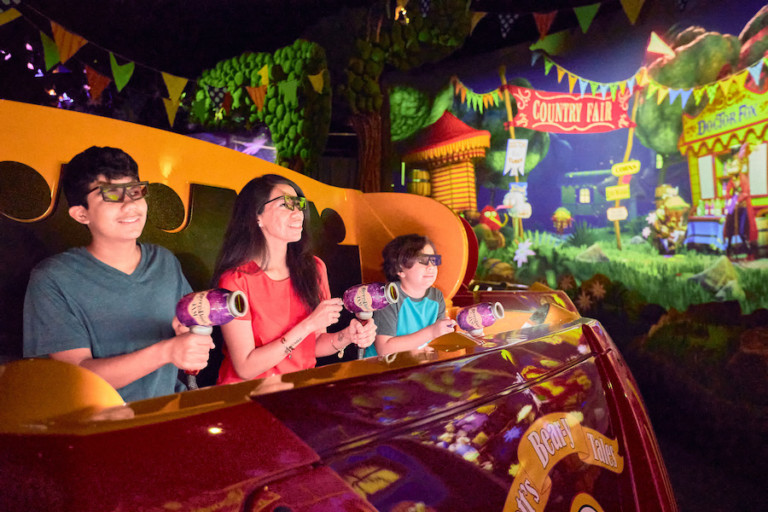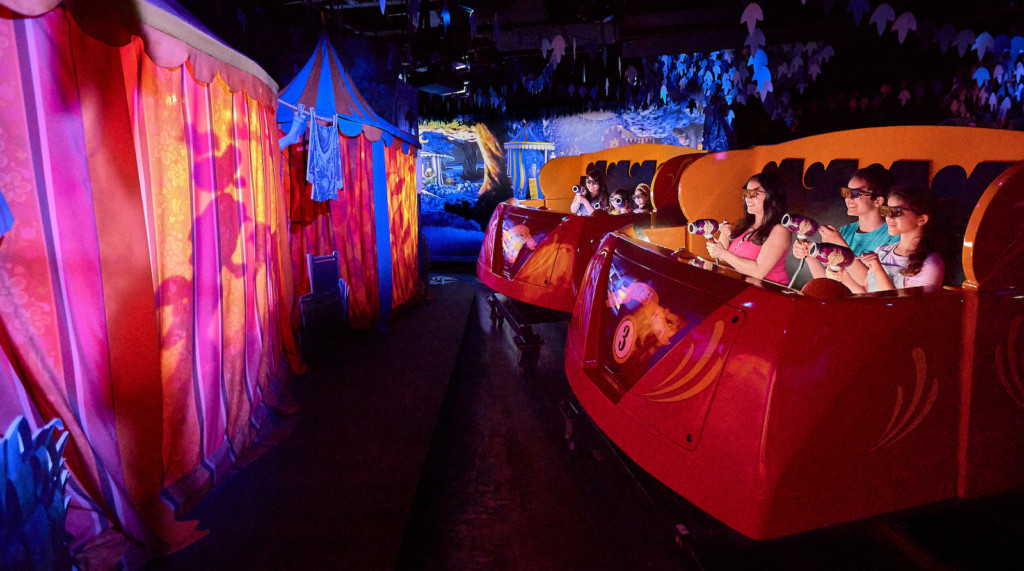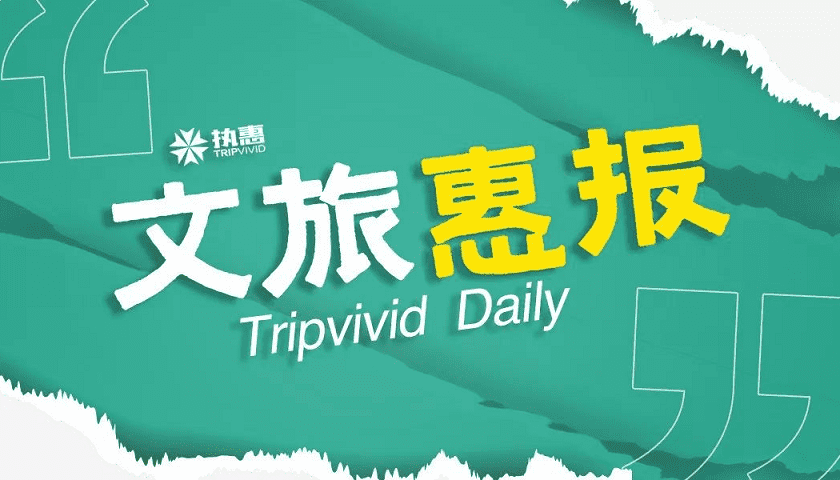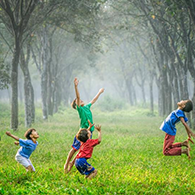新用戶登錄后自動創建賬號
登錄
In summer 2020, I wrote about where the next big IPs for theme parks might come from. Would the next big hit be a new movie franchise? A new streaming service series? Perhaps a comic book? Or what about a video game? Following this, I also wondered what was wrong with parks embracing their own IPs. Why not use your own locally crafted storylines, themes and characters?
Some experts insist that the use of a popular IP is an absolute must when it comes to attraction design. There is some logic behind this idea, and a long history of big success stories to back it up. An attraction themed to a popular IP can generate higher attendance numbers. If done well, this can also increase guest spending on food and merchandise tied into that same IP.

There are also a number of parks and attractions out there who have either never really tried to come up with their own storylines and themes, and a few that may have given it a chance a long time ago and left their creations to fade into nothing more than theme park trivia.
For example, there are few today who actually remember the Magic Mountain Trolls from the park’s pre-Six Flags days. But this doesn’t mean that someone creative couldn’t someday try to revive the characters for a new generation. Yes, it’s doubtful, but stranger things have happened!
Theme park IPs of yesteryear
Take the Speelunkers from Six Flags over Texas as a prime example. Virtually unknown to most but the oldest fans of that theme park, the Speelunkers were an original creation for the park’s dark flume ride, Speelunker’s Cave.
This ride had a good run, lasting from 1964 to 1991 when the attraction was given a makeover and transformed into Yosemite Sam and the Gold River Adventure in 1992. This was part of Six Flags initial efforts to add Looney Tunes characters to their parks.
Flooding at the park brought Yosemite Sam’s adventures to a stop. However, Six Flags recently announced that a new dark ride would rise on the site, called Pirates of Speelunker Cave. Yes, the Speelunkers are making a surprise return to the park, even replacing an established IP in the process.
The rise of nostalgia
I have also previously written about the fact that nostalgia can be a big selling point. Guests are looking to get away from the modern world and the ongoing threat of COVID. And many are finding the lure of a new take on an old favourite impossible to resist.
Knott's Berry Farm was able to strike gold this year with the opening of the new Knott’s Bear-y Tales: Return to the Fair interactive dark ride experience. This is a modern revival of a classic and much missed Knott’s-created IP.

While the original dark ride was only open for 11 years (1975 – 1986) the two attractions to replace it never quite struck the same chord with the park’s fanbase.
The original ride was followed by Kingdom of the Dinosaurs from 1987 to 2004 only to sit dark and empty for the next decade. Following that, a video-game style interactive version called Voyage to the Iron Reef opened in 2015. This closed five short years later to make way for the return of the Berry Tales theme.
Popular theme park IP
It is surprising that Six Flags took this long to revive the Speelunkers, as a sister park in Georgia has been thrilling guests with its own southern mansion themed monster dark ride for decades.
What started out as the Tales of the Okefenokee (1967 – 1980) at Six Flags over Georgia was upgraded with the help of Sid and Marty Krofft to become the famous Monster Plantation dark ride. This ran from 1981 to 2008.
When the attraction was becoming a bit long-in-the-tooth, Six Flags upgraded it to become Monster Mansion in 2009. This provided a lot of technical and scenic updates while keeping the spirit of the original still alive.
40 years later, some park guests might riot if Six Flags were to even consider closing the attraction down. Six Flags is a theme park chain that often “clones” popular ride experiences at other Six Flags parks. But, curiously, they have never attempted to clone this one.
Lost rides
Unfortunately, some classic attraction concepts that were wildly popular with guests have been lost over the years.
Kings Island, before the Paramount or Cedar Fair management days, had one such attraction called the Phantom Theater. Technically, Phantom Theater opened in 1992, the same year that Paramount bought Kings Island. However, the creation of the attraction pre-dates the first days of Paramount.
The Phantom Theater was Kings Island’s attempt to create their own version of Disney’s Haunted Mansion. And they actually did a pretty good job of it. Phantom Theater features the same kind of omni-mover ride system with a custom created fleet of Doom Buggy inspired cars that would rotate to view the various scenes in the dark ride.
As with Haunted Mansion, Phantom Theater could walk that fine line between being a scary ride and a fun ride. This made it a perfect fit for the entire family to enjoy.
The Phantom Theater closed in 2002, however, and reopened the following season as Scooby-Doo’s Haunted Castle. Then, the Scooby-Doo theme made way for Boo Blasters on Boo Hill in 2010. This was after Cedar Fair bought the Paramount chain of parks, but did not want to renew deals to keep existing IPs.
If Cedar Fair was to attempt to revive the old Phantom Theater theme and storyline for a new generation, I believe it would be a popular decision.
Creating something new
In addition to keeping a few old self-made IPs alive, there is a new project at a Six Flags theme park that I find just as amazing.
Six Flags Fiesta Texas built a Premier Rides launched coaster called Poltergeist back in 1999. While the coaster was essentially the same as the Joker’s Jinx at Six Flags America, the Fiesta Texas park had yet to really embrace the DC Comic characters at the time.
Fiesta Texas is a fairly unique park in the Six Flags chain. It features a lot of themed scenery and lands throughout the park, more so than your average Six Flags venue. This, in part, goes back to the park’s original creation by the Gaylord Entertainment Company, which also built Opryland USA in Nashville.
As such, the park’s opening lineup was very entertainment themed. There was lots of visual eye candy, a large number of live shows, and only a small collection of rides.
After Six Flags bought the park in 1996, the number of rides in the park soon increased. To make Poltergeist fit into the theme park, the idea was to theme the coaster’s station building as a sort of walk-through haunted house experience.
Poltergeist reimagined
Really that was all there was to it until 2021. Then, the current park management closed Poltergeist in mid-summer to flesh out the haunted house aspect of the ride. The indoor portions of the queue were upgraded with new theming, and air conditioning. Plus a large number of new creepy props were created for the outdoor portion of the queue and the approach to the attraction’s signature “house”.
The house itself was refurbished and repainted outside, and the roller coaster trains were painted and given new frightening graphics. Meanwhile, a new creepy green track colour and an appropriately supernatural looking lighting package were added to the outside.
Meanwhile, the park spent the months of the transformation providing constant updates about what was coming. The storyline was that someone new had purchased the old house and while moving in was adding new decor. On Labor Day Weekend, just ahead of the park’s Fright Fest Halloween festival, the all-new Poltergeist opened. It brought along with it an all-new self-made IP for the park’s guests to enjoy.
Inspired theme park IP creations
With the right creative team, there is nothing wrong with an attraction or theme park coming up with its own self-inspired IP creations and unique themes for park rides. In fact, those obsessed with theme park design often look back at unique creations that never got off the drawing boards for some of the world’s biggest theme parks.
With the right creative team, there is nothing wrong with an attraction or theme park coming up with its own self-inspired IP creations and unique themes for park rides
Disney Imagineering has been behind a number of these. You can find tales and artwork for never-built creations like the Western River Expedition, Discovery Bay, Beastly Kingdom… and Sci-Fi City.
Sci-Fi City was an especially unique creation. The idea was for it to be a complete replacement for Tomorrowland at Tokyo Disneyland. This would have kept some of the land’s bigger attractions while building a whole collection of new rides and concepts. One of the major E-ticket concepts for the land would have been a crazy alien/cyberspace themed version of Disney’s Rock ‘n Roller Coaster attraction, called Cyber-Mid.
Self-made themes
Self-made themes and IPs don’t have to just extend to new rides, attractions and lands at theme parks. Self-made park characters are also a great place for a park to add their own personal touch. For instance, Knott’s Berry Farm brought back an old character a few months ago in the form of Whittles, the Ghost Town Prospector.
Universal Studios has many big studio themed IPs. Yet it has also created a large collection of well-known theme park characters as part of Halloween Horror Nights. Perhaps the most well known is Jack. This scary clown terrorizes the guests and is often set up as the mastermind behind much of the chaos that takes place.

Smaller parks may not have access to the kind of funding needed to invest in major IPs. However, this comes with an advantage: the ability to be creative and come up with their own ideas.
Kennywood’s famous ‘Phantom’ character, as a theme for the Steel Phantom / Phantom’s Revenge coaster, is a good example. In 2020, the park revised its Old Mill flume ride. In doing so, it ousted the Garfield IP for a new storyline about a cowboy skeleton figure named Harold.
Until a few years ago Kings Dominion had some light theming for the park’s Volcano: The Blast Coaster before it was removed, along with a UFO / Alien Abduction themed for the dark Flight of Fear coaster.
But really, the only limit is your imagination. So, why not dream big and add some local flair to your park experience, introducing your guests to something new.













